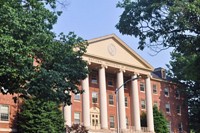Advertisement
Grab your lab coat. Let's get started
Welcome!
Welcome!
Create an account below to get 6 C&EN articles per month, receive newsletters and more - all free.
It seems this is your first time logging in online. Please enter the following information to continue.
As an ACS member you automatically get access to this site. All we need is few more details to create your reading experience.
Not you? Sign in with a different account.
Not you? Sign in with a different account.
ERROR 1
ERROR 1
ERROR 2
ERROR 2
ERROR 2
ERROR 2
ERROR 2
Password and Confirm password must match.
If you have an ACS member number, please enter it here so we can link this account to your membership. (optional)
ERROR 2
ACS values your privacy. By submitting your information, you are gaining access to C&EN and subscribing to our weekly newsletter. We use the information you provide to make your reading experience better, and we will never sell your data to third party members.
Research Integrity
Sezen, Sames, and Columbia
by Rudy M. Baum
August 8, 2011
| A version of this story appeared in
Volume 89, Issue 32
This week’s lead Science & Technology Department story by C&EN News Editor William G. Schulz is a devastating account of systematic scientific fraud committed by former Columbia University chemistry graduate student Bengü Sezen. Schulz has been following the Sezen case since her work was called into question and Columbia began an investigation of it in 2006.
Sezen worked under the direction of Dalibor Sames from 2000 to 2005. Sames was an assistant chemistry professor when Sezen joined his group; he received tenure at Columbia in 2003. During her time in Sames’ lab, Sezen was the lead author on three papers published in the , all of which Sames retracted in 2006 after the results reported in the papers were called into question because no one could reproduce them (J. Am. Chem. Soc.2006,128,8364). Sezen received her Ph.D. in 2005; Columbia revoked it earlier this year.
Schulz’s story in this week’s issue is based on Columbia’s investigative report, which was obtained from the Office of Research Integrity (ORI) in response to a Freedom of Information Act request by C&EN, as well as numerous interviews. A voice not heard in those interviews, and barely heard throughout the investigation of Sezen’s work, is that of Sames. When questions were first raised about Sezen’s research, Sames deflected them, citing the ongoing investigation. As reported by Schulz, now “Columbia has expressly forbidden Sames or any of its employees from speaking publicly about the Sezen case,” often citing privacy concerns.
There isn’t much more to say about Bengü Sezen. The redacted ORI report makes clear that she is a pathological liar who didn’t conduct any of the research reported in the JACS papers or her thesis. Which is actually pretty amazing, because if you look at the papers and the associated supporting information, you draw two conclusions: Sezen knows her chemistry, and she put an enormous amount of effort into her fraud. Her first JACS communication in 2002, for example, has 33 pages of supporting information, including eight carefully constructed NMR spectra.
But what of Sames? Questions about Sezen’s research were raised by other members of Sames’ group as early as 2002, Schulz reports. Those questions weren’t just ignored by Sames; those who raised them were punished. “At least three unnamed subordinates left or were dismissed from the Sames lab, for example, for stepping forward and raising concerns about Sezen’s irreproducible research results,” Schulz writes. As the report makes clear, these whistle-blowers were sacrificed in order to maintain her favored status in the research group. Sames acted, in fact, only after a member of his group specifically set Sezen up and presented irrefutable evidence of her misconduct.
Columbia’s investigation focused exclusively on Sezen’s misconduct. From the ORI report obtained by C&EN, it appears that Columbia has not made any attempt to probe whether Sames was guilty of scientific misconduct himself during Sezen’s time in his lab. And in fact, a close reading of Columbia’s policy on research misconduct—which was adopted in February 2006—suggests that, in the university’s eyes, Sames’ behavior throughout was acceptable. Allegations of misconduct, the policy states, must be made to the “appropriate Responsible Academic Officer,” who is a “Chair, Dean, or Director,” not a principal investigator. The policy, which runs to 14 pages of legalistic, process-oriented gobbledygook, doesn’t appear to mention the responsibility of PIs at all.
And Columbia? The claim that the university can’t talk about the case to protect individuals’ privacy is laughable. Most of the redactions in the report of the university’s investigation are easily filled in with the appropriate names. The Sezen/Sames case is an embarrassment, the malefactor has been banished from the ivory tower, an up-and-coming young professor is moving along with his career, and Columbia is putting the unpleasantness behind it. It may be good spin doctoring, but it’s a lousy way to run a great research institution.
Thanks for reading.



Join the conversation
Contact the reporter
Submit a Letter to the Editor for publication
Engage with us on Twitter